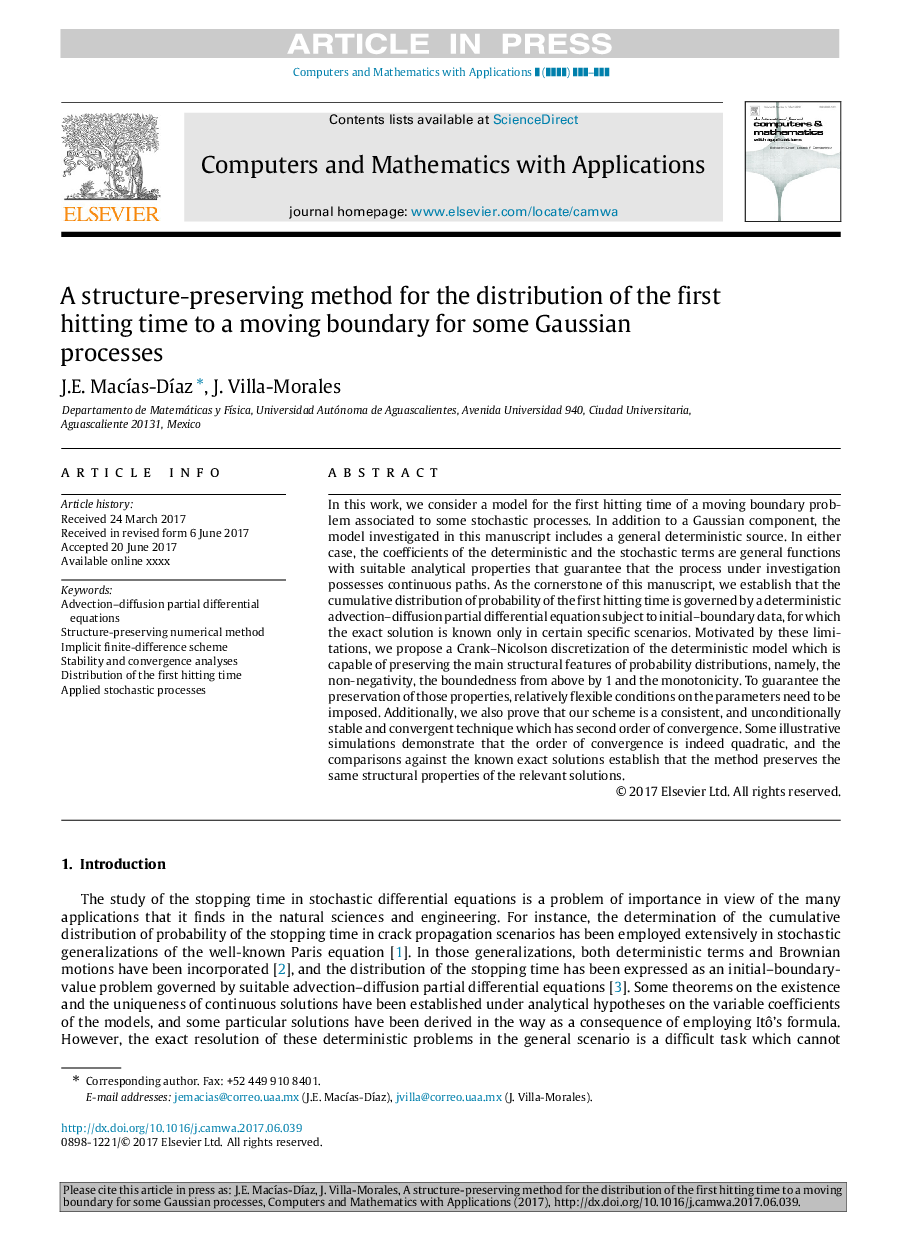| Article ID | Journal | Published Year | Pages | File Type |
|---|---|---|---|---|
| 6892448 | Computers & Mathematics with Applications | 2017 | 14 Pages |
Abstract
In this work, we consider a model for the first hitting time of a moving boundary problem associated to some stochastic processes. In addition to a Gaussian component, the model investigated in this manuscript includes a general deterministic source. In either case, the coefficients of the deterministic and the stochastic terms are general functions with suitable analytical properties that guarantee that the process under investigation possesses continuous paths. As the cornerstone of this manuscript, we establish that the cumulative distribution of probability of the first hitting time is governed by a deterministic advection-diffusion partial differential equation subject to initial-boundary data, for which the exact solution is known only in certain specific scenarios. Motivated by these limitations, we propose a Crank-Nicolson discretization of the deterministic model which is capable of preserving the main structural features of probability distributions, namely, the non-negativity, the boundedness from above by 1 and the monotonicity. To guarantee the preservation of those properties, relatively flexible conditions on the parameters need to be imposed. Additionally, we also prove that our scheme is a consistent, and unconditionally stable and convergent technique which has second order of convergence. Some illustrative simulations demonstrate that the order of convergence is indeed quadratic, and the comparisons against the known exact solutions establish that the method preserves the same structural properties of the relevant solutions.
Keywords
Related Topics
Physical Sciences and Engineering
Computer Science
Computer Science (General)
Authors
J.E. MacÃas-DÃaz, J. Villa-Morales,
